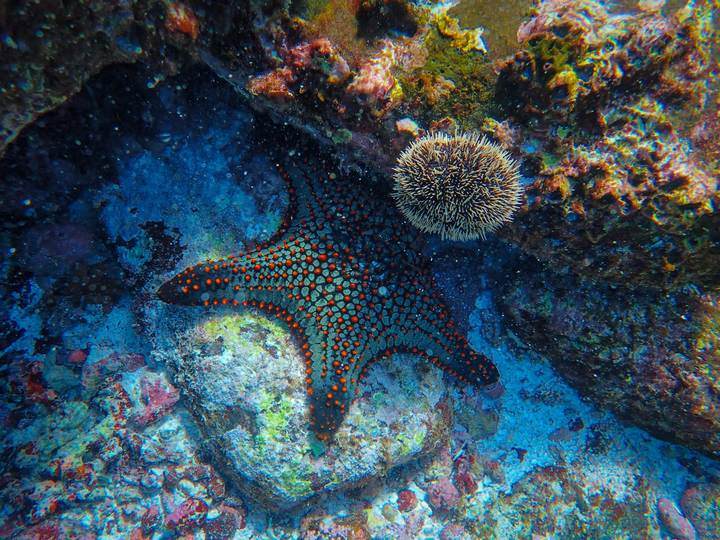Multidisciplinary methods and technology advancements have greatly accelerated the field of modern marine research. Scientific exploration and comprehension of the vast and diverse marine habitats are now possible because of these breakthroughs.

This list of five essential elements offers an intimate peek into the process of doing contemporary marine research.
Remote Sensing and Satellite Technology
Satellite technology and remote sensing are essential instruments in contemporary marine research. Satellites with sensors gather data on the temperature of the sea surface, chlorophyll concentrations of substances, and ocean currents. This information aids in the global monitoring and prediction of oceanic changes by researchers. Algal blooms, for instance, are essential to controlling fisheries and comprehending the health of marine ecosystems. Satellite photography helps follow these events. These technologies make available real-time, complete data that was not before available. Furthermore, scientists may now investigate far-flung and unreachable ocean regions like the polar regions and deep-sea ecosystems thanks to satellite technology and remote sensing. Researchers may more precisely study trends over time and evaluate the effects of climate change and human activity on marine ecosystems by taking precise measurements and photos from space. These instruments revolutionize marine research by offering a broader perspective and enhancing our understanding of ocean dynamics and environmental processes.
Autonomous Underwater Vehicles (AUVs)
The development of autonomous underwater vehicles, or AUVs, has revolutionized marine research by making subsea imaging capabilities possible. These robotic tools play a critical role in scientific surveying, environmental data collection, and ocean bottom exploration and mapping. AUVs, which are outfitted with cutting-edge sensors and high-resolution cameras, record intricate pictures and movies of marine life and underwater environments, giving scientists previously unheard-of insights into oceanic ecosystems. They are perfect for exploring difficult and distant underwater areas where traditional methods are impracticable or risky because of their autonomous operation, which removes the need for direct human participation. AUVs are essential to the advancement of deep-sea research and to improving our knowledge of the vast, sometimes unreachable depths of the ocean.
Genomic and Molecular Techniques
Marine biology now has new opportunities because of genomic and molecular approaches. Researchers may examine the richness of marine creatures at the molecular level thanks to genetic analysis and DNA sequencing. By using these methods, it is possible to discover new species, comprehend evolutionary connections, and learn more about the genetic foundation of adaption to marine habitats. By using genetic material from water samples, environmental DNA (eDNA) sampling is a non-invasive technique that finds species and provides information on the richness of whole ecosystems. Furthermore, by offering information on population genetics and species distributions, genomic and molecular approaches support conservation efforts. These techniques are useful for tracking endangered species, evaluating the health of marine populations, and putting specific conservation plans into action. These sophisticated methods not only expand our comprehension of marine biodiversity but also inform sustainable management practices and ecosystem conservation initiatives worldwide.
Long-Term Ecological Research (LTER) Programs
Programs for Long-Term Ecological Research (LTER) are crucial for comprehending marine ecosystems over long periods. In order to track ecological processes and changes in the environment, these systems continuously gather data at designated locations. Long-term data sets are essential for seeing patterns, comprehending diversity in nature, and evaluating how human activity affects marine ecosystems. LTER initiatives provide a basis for well-informed decision-making about maritime conservation and management. Additionally, they let multidisciplinary research teams collaborate, enabling scientists to combine data from different disciplines, including biology, climatology, and oceanography. LTER projects provide important insights into ecosystem dynamics and resilience by examining long-term patterns and interactions within marine ecosystems. These insights help to shape policies and practices that aim to protect marine biodiversity and ecosystem services for future generations.
Interdisciplinary Collaboration
Multidisciplinary cooperation is a defining feature of contemporary marine science. To solve challenging maritime problems, scientists from a variety of disciplines collaborate, including oceanography, biology, chemistry, and engineering. Research initiatives conducted in collaboration combine many approaches and viewpoints to produce thorough and creative answers. For instance, to comprehend the interactions between biological creatures, geological structures, and climatic conditions, researchers examining the health of coral reefs collaborate with biologists and climate scientists. This collaborative strategy makes use of disciplinary skills to increase the depth and scope of marine research. It enables academics to work on complex issues, including how climate change affects marine ecosystems, how to reduce pollution, and sustainable resource management. Interdisciplinary teams support comprehensive understanding and well-informed decision-making in marine scientific and conservation initiatives worldwide by combining their expertise and resources.
Conclusion
In order to study and comprehend the seas, modern marine research uses a variety of cutting-edge technology and cooperative methods. These approaches offer important insights into marine ecosystems, ranging from long-term ecological research and genetic procedures to satellite technology and autonomous underwater vehicles. Marine studies must continue to progress in order to safeguard the world’s seas for coming generations.

